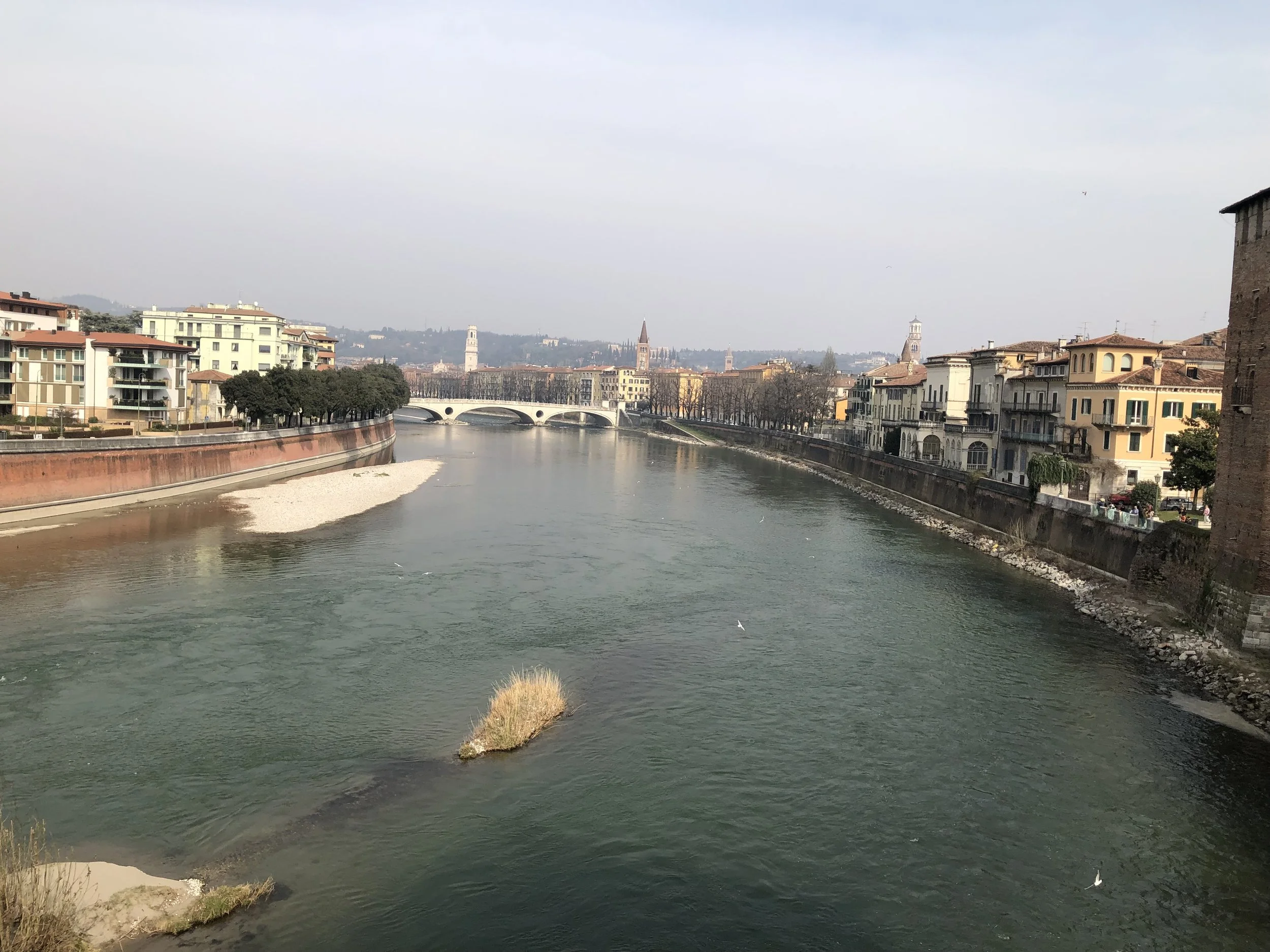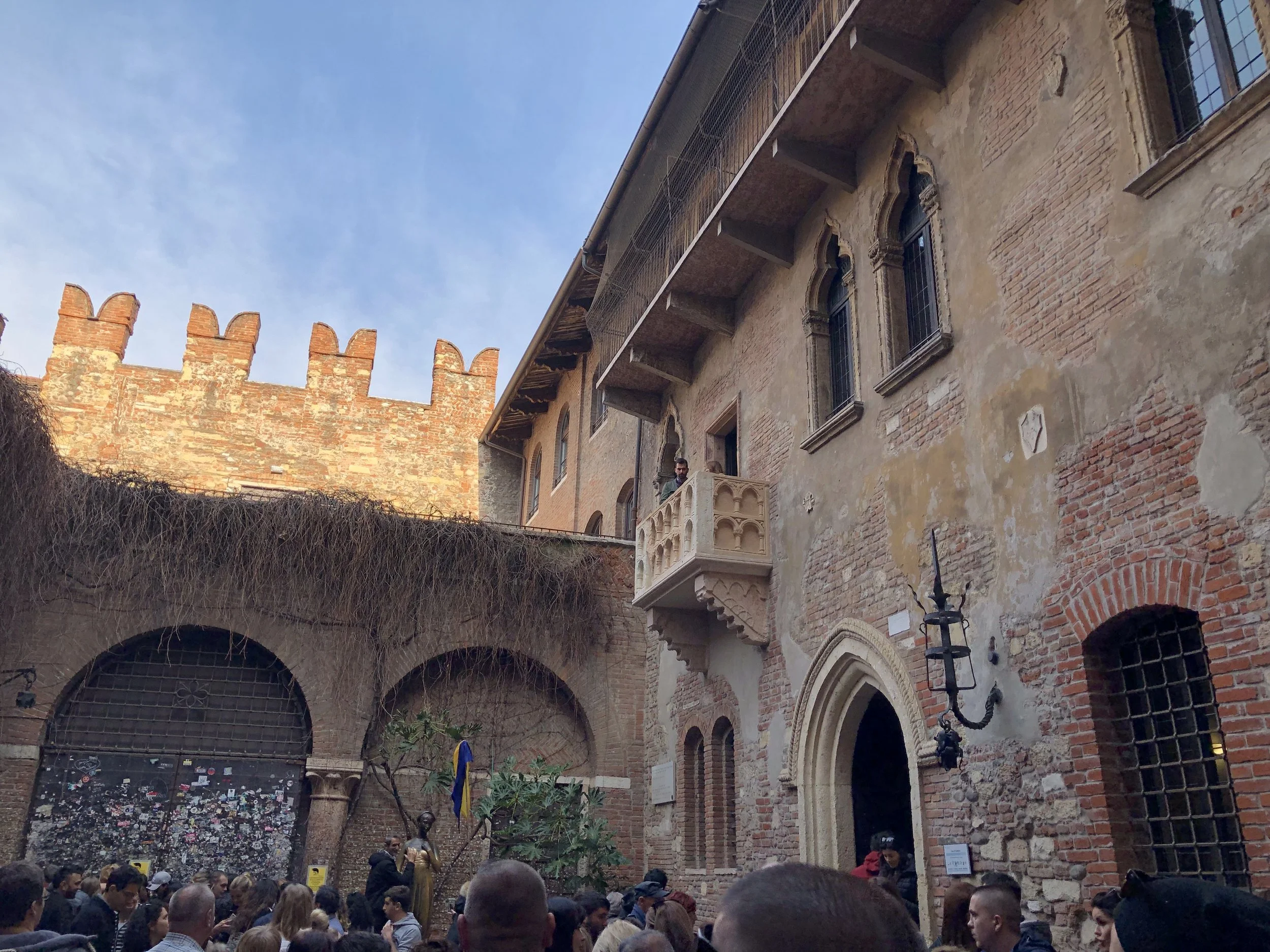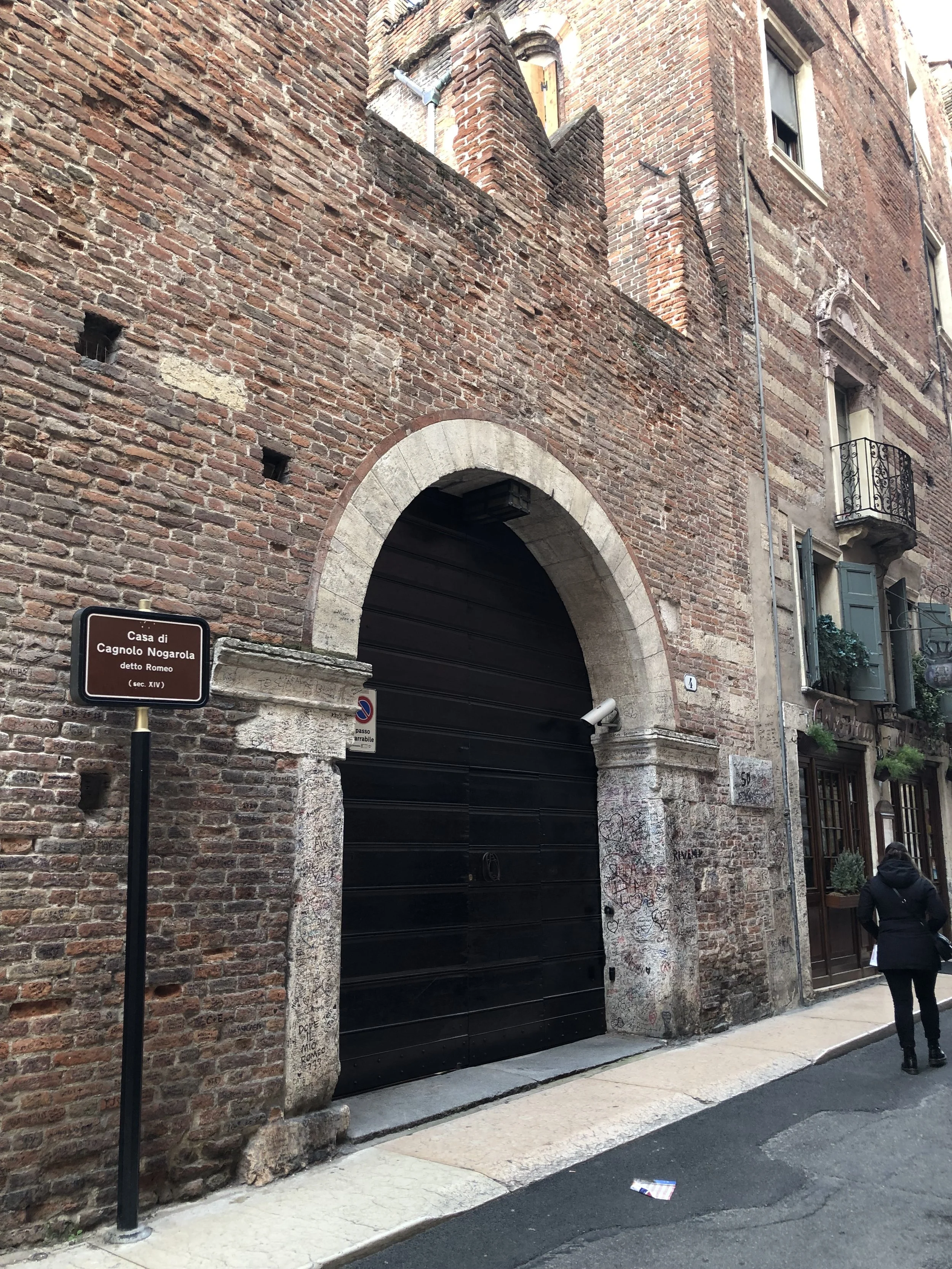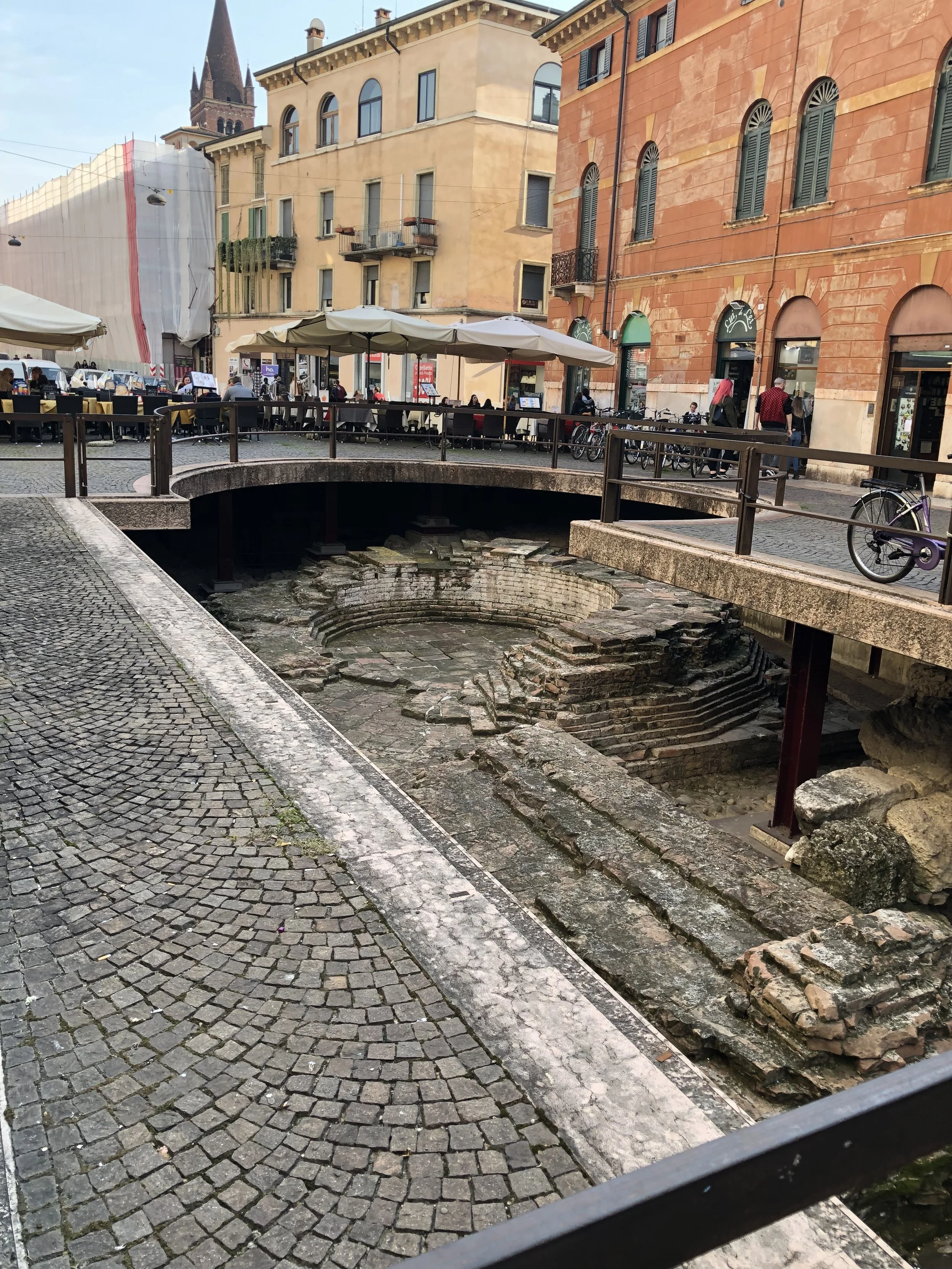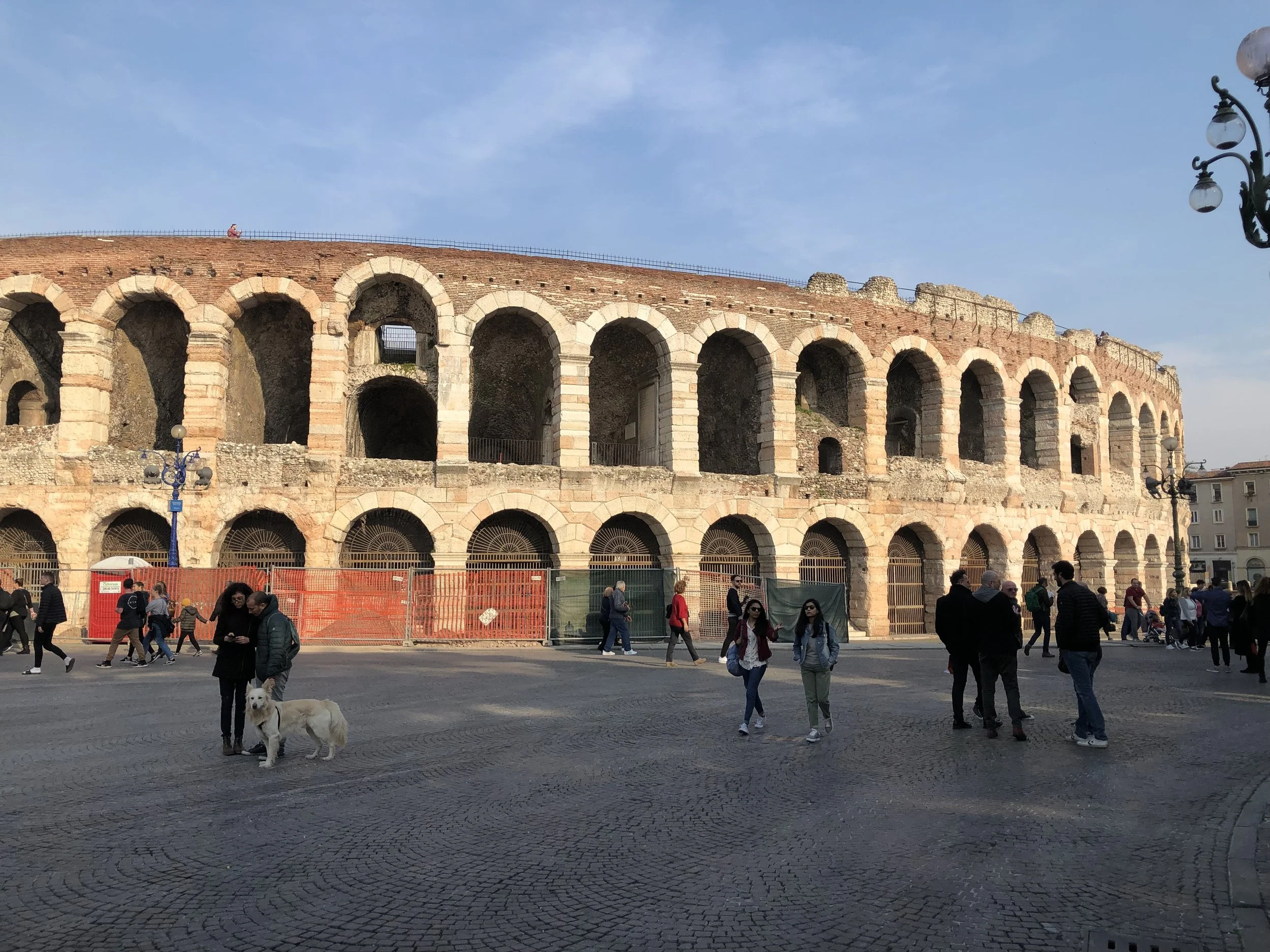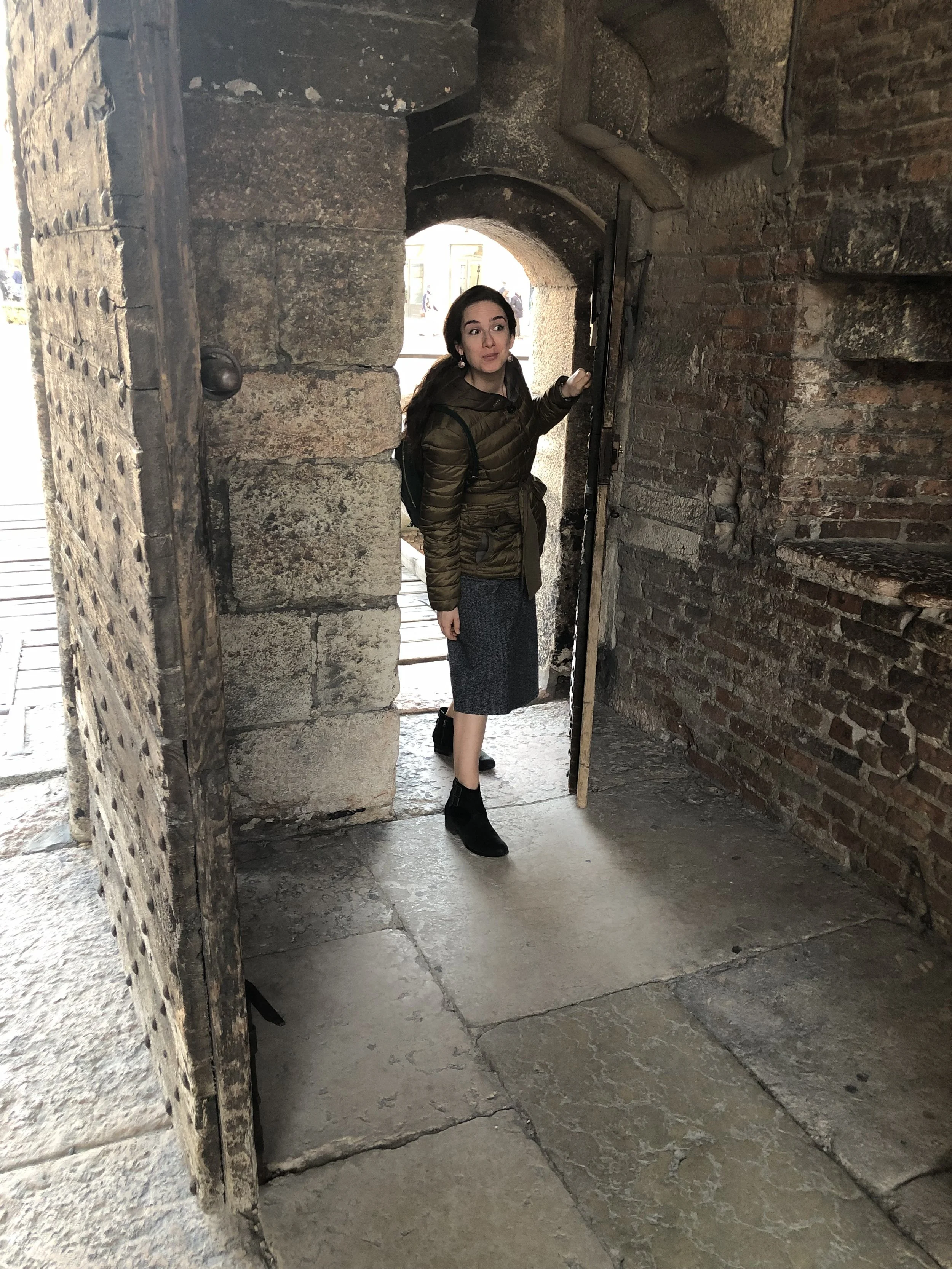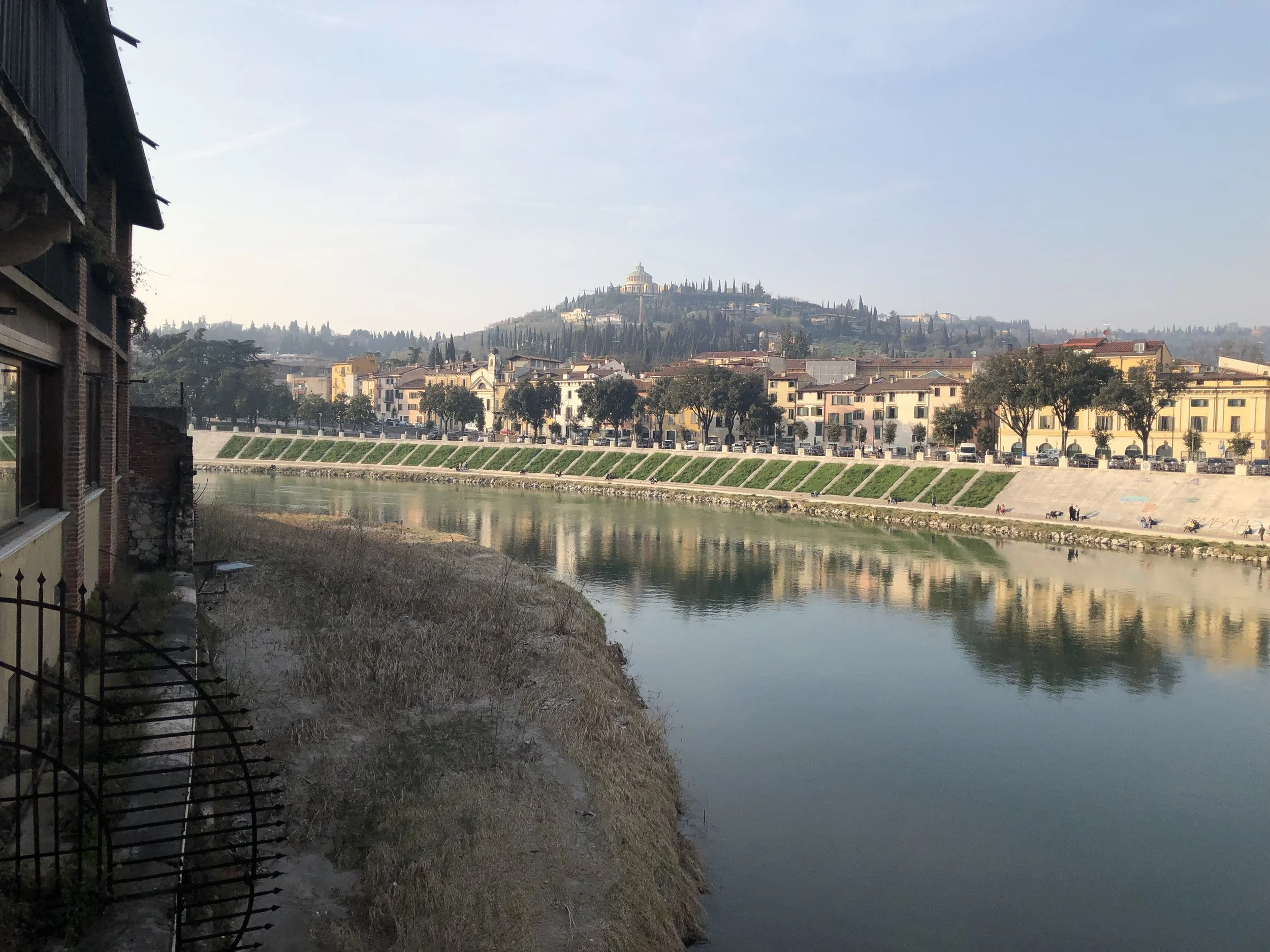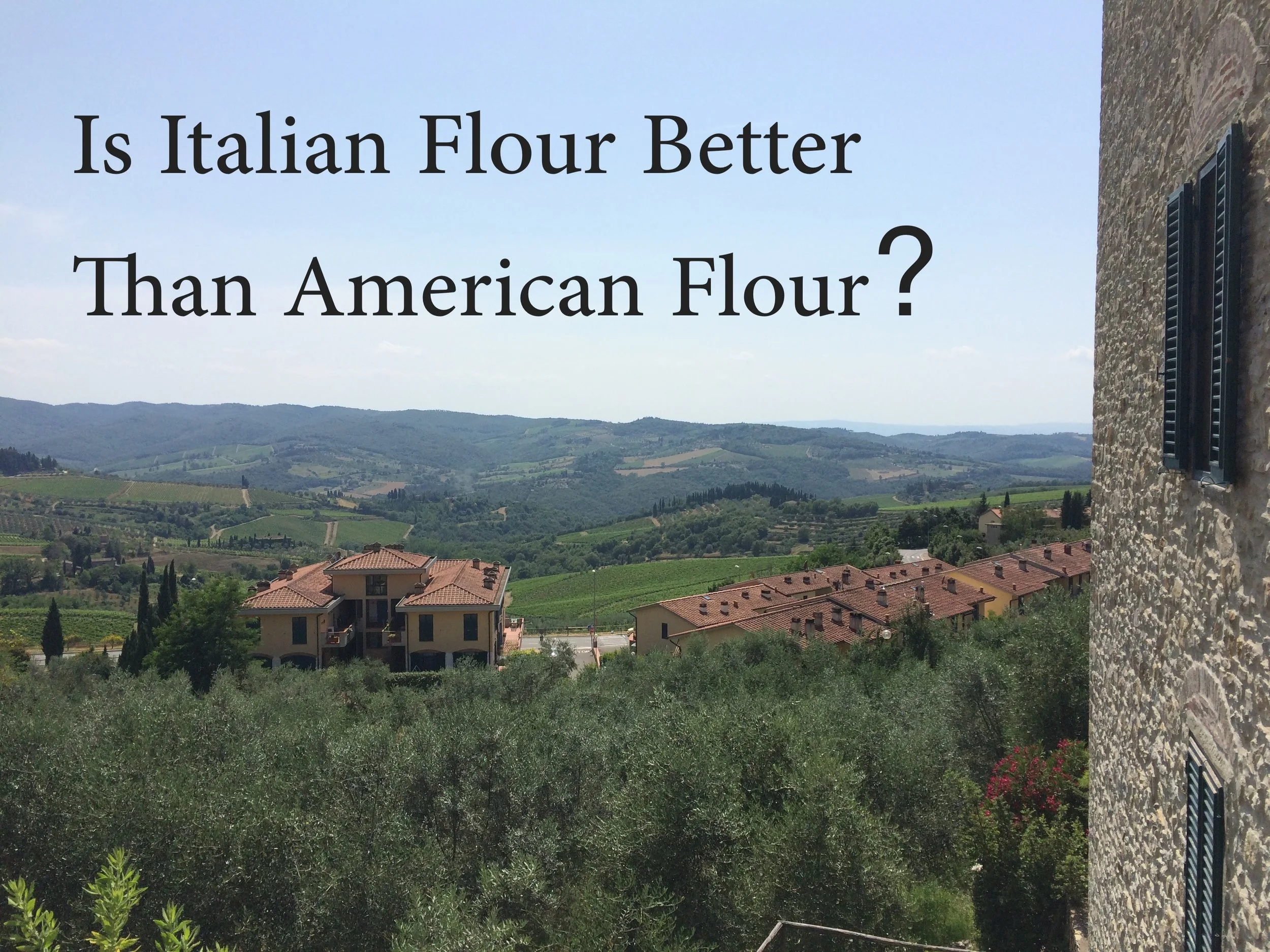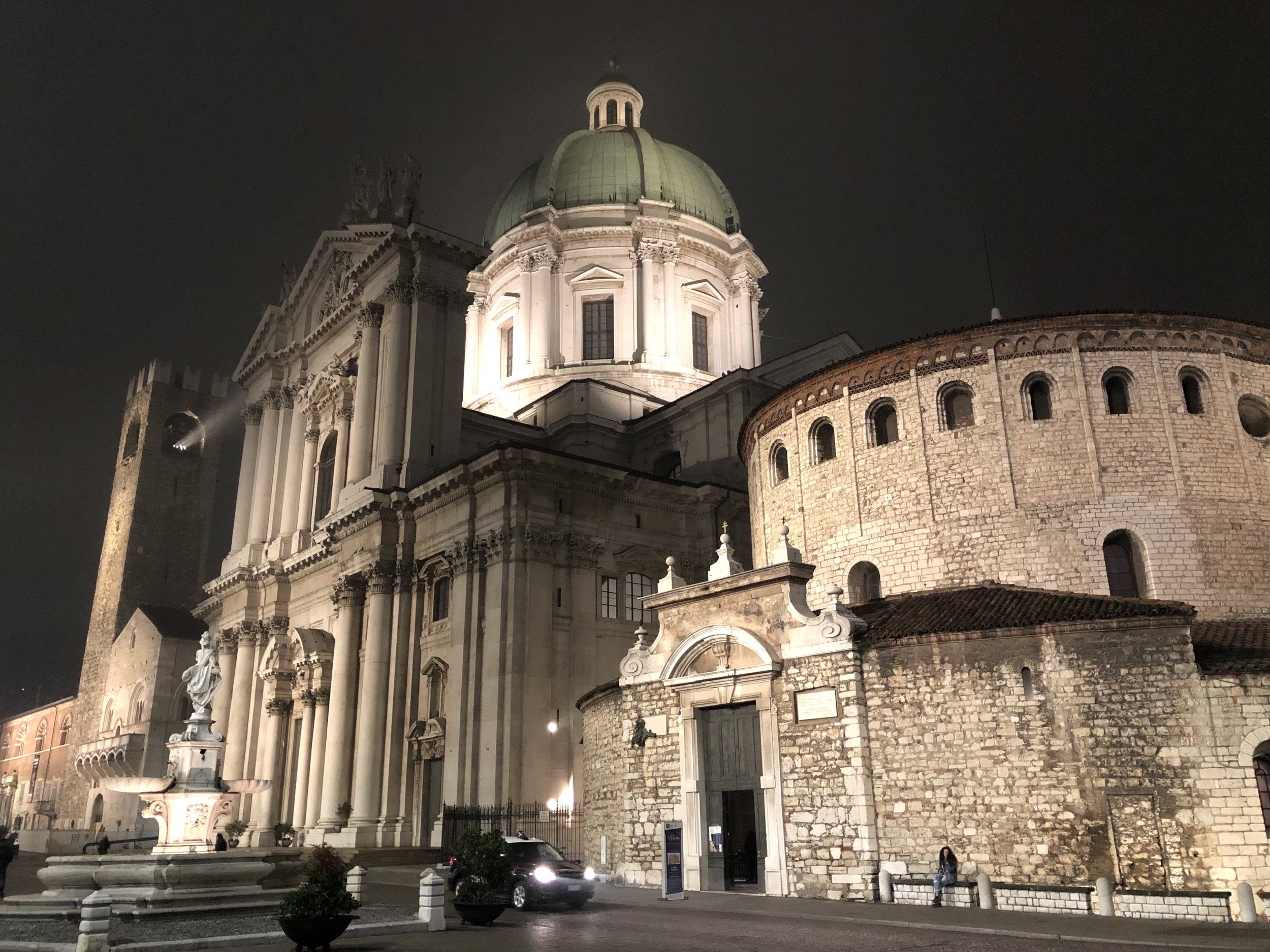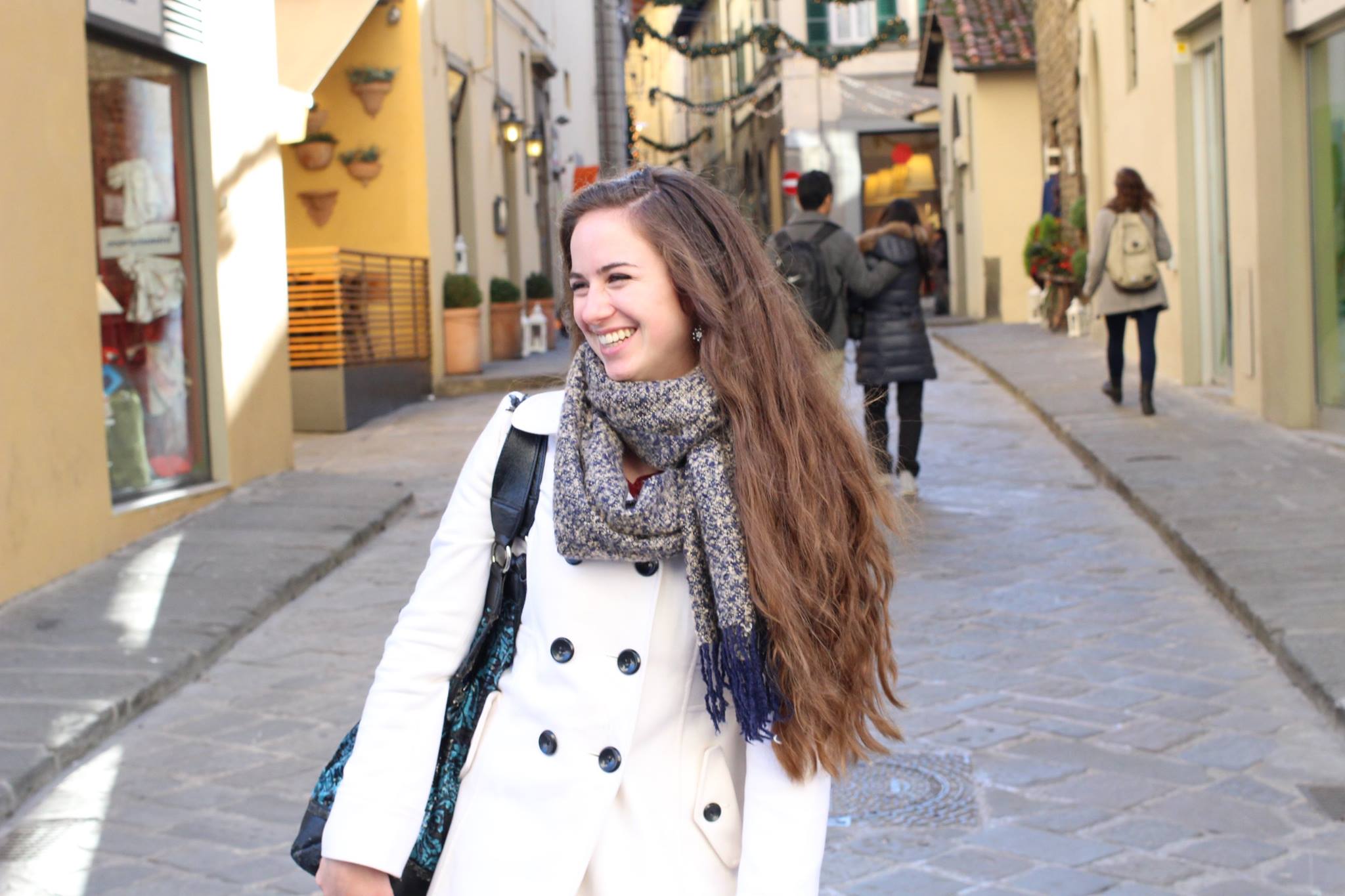Explore Italy: Verona
/view of Verona from Ponte Scaligero
on Ponte Scaligero
Verona in a nutshell
Location: Veneto, Italy
Best known for: Being the setting for Shakespeare’s Romeo and Juliet.
Days needed to explore: 1+…can be easily done in a day trip, but is also a good option as a base to explore northern Italy as it is well connected.
Courtyard of Juliet, Juliet’s balcony, and Juliet’s statue
Casa di Romeo
What to see and do:
Balcone di Giulietta / Juliet’s balcony - a courtyard, a bronze statue, and a small balcony capture the imagination for the setting of Shakespeare’s doomed love story. There is no fee to enter, nonetheless there is often a large amount of tourists around and often even a line to go up and take a picture touching the golden breast of Juliet’s statue. Rumor has it that touching, or rubbing, the right breast of the statue will bring good luck in love. I find this vulgar, seeing the hundreds of people going up, posing and smiling, touching the statue’s boob. I mean, c’mon. Just enjoy the moment. What would Shakespeare say? To each his own, I guess.
Casa di Romeo - if you’re interested in Juliet’s balcony, you may want to see Romeo’s house also, although it’s not nearly as exciting. It’s a private residence so you won’t get to see much, just the outside of the palace with a plaque.
La Tomba di Giulietta / Juliet’s Tomb - inside Museo degli Affreschi, formerly San Francesco al Corso Convent, there lies Juliet’s tomb. The museum has an entrance fee.
L’Arena di Verona / Arena of Verona - the third largest Roman amphitheater in the world. For a fee you can enter to see the inside.
Piazza Brà - conveniently located right next to the arena and is the largest piazza in Verona
Piazza delle Erbe - the oldest piazza in Verona
Ponti di Verona / Bridges of Verona - there are several bridges in Verona. A few notable ones were destroyed during World War II by Nazis, but were able to be rebuilt using the same durable blocks retrieved from the bottom of the river. Two of these would be the Ponte di Pietra, the oldest bridge, as well as the Ponte Scaligero, connected to the medieval castle Castelvecchio
Castelvecchio - a medieval castle, can be entered for a fee
Part of Porta dei Leoni, ancient Roman Ruins
Established: The first settlers of Verona probably date back to the Neolithic period. Verona has a rich history, often finding itself the capital for many rulers, kingdoms, and peoples. It became an especially important city under Roman rule. Verona was ruled by Rome, Venice, France, and even Austria before finally becoming a part of the Kingdom of Italy in 1866.
Typical foods to try:
Gnocchi di Patate (Potato Gnocchi/Dumplings) - classic Veronese gastronomy
Polenta - a popular dish in many of the colder, northern Italian regions, including Verona. Unlike polenta that you may have experienced where it is solid and gelatinous, sometimes sliced and fried or grilled, typical polenta in Italy is soft, like a thick soup or porridge.
Risotto all’Amarone - a creamy rice dish prepared with several ingredients found exclusively in the region, such as Vialone Nano rice, Amarone della Valpolicella wine and Monte Veronese cheese.
Sfogliatine VillaFranca - beloved puff pastry-like sweets known throughout Italy, try some while you’re here!
Pandoro - literally, “bread of gold” or “golden bread” soft, sweet, cake-like bread, traditional at Christmastime. It’s similar to panettone, but without any add-ins.
L’Arena di Verona, would it be Italy if there wasn’t scaffolding somewhere??
Why I like Verona
Verona surprised me.
It took me long enough to visit it, for as simple as it is to get there from Florence. It’s one of those cities you hear about frequently, it seems every friend, tourist, student, or expat has just been. Since I had never been, I would always ask, “did you enjoy Verona?” and almost every time I would get the “meh” response. “It’s nice, but it’s overrated” seemed to be the consensus. “Too many tourists, and the only cool thing to see is Juliet’s House.” My excitement to visit dwindled, as I just didn’t seem to talk to anyone who loved it. It moved lower on my to-visit list.
Eventually a trip up to Brescia with time to spare for visiting a few new places came up. Verona was added to the list, as it seemed high time to visit, and is right next to Brescia. If you don’t visit Verona from Brescia after you’ve been there a few times, you’re basically just avoiding it, and I really wasn’t trying to. I just didn’t have the excitement built up like I did for other locations.
A Little Door in Castevecchio
When I finally got to Verona, I was pleasantly surprised. It was bigger than I expected, with more to see than I expected, and much more pleasant to wander around than I expected. I certainly don’t want to go the opposite direction and lead you to think that Verona is Top 3 Cities To Visit In Italy, but it is worthwhile if you have the time. I love the story of Romeo and Juliet (particularly the ballet as I grew up in the ballet world) and found having real places to visit for a fiction story was quite interesting. However, the single most crowded area always seems to be Juliet’s courtyard to touch her breast (for luck in love) and take a picture, which I found silly and vulgar. I did not do it, and was able to skip the line and just walk in and enjoy the statue and courtyard. Well, as best as I could watching person after person walk up and assault Juliet’s statue, aha. If you’re only thinking of visiting Verona for Juliet’s courtyard, I don’t think it’s worth it.
Aside from the well known Romeo and Juliet locations, the amphitheater, the castle, and the bridges are all impressive and fun to see.
Verona is a joy to explore, if you go in with the right expectations. The atmosphere and size make it perfect for exploring for a day or two, without feeling like you’re wandering around in circles or like you’re missing too much.
View of the Adige river from Verona

